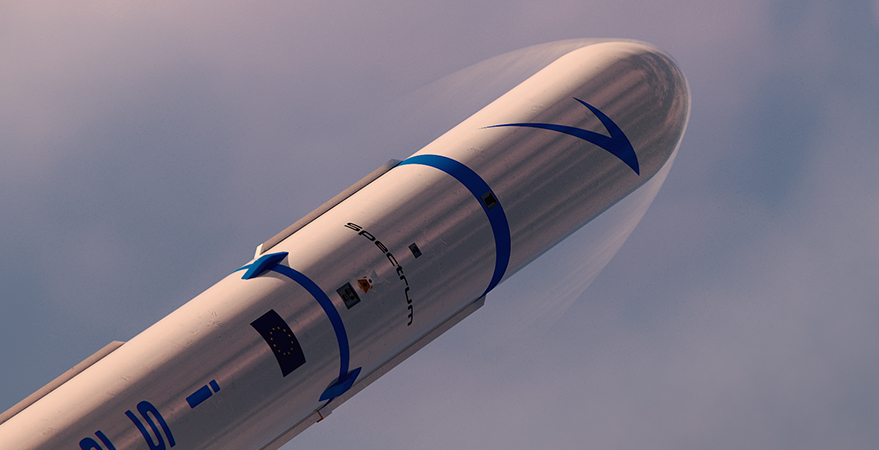WASHINGTON — Isar Aerospace, a German small launch vehicle company, has raised an additional $75 million that will allow the company to expand its manufacturing and launch capabilities.
The company announced July 29 that it added $75 million to a Series B round it raised in December 2020. The new funding brings the size of that round to more than $165 million, with a total raised to date of more than $180 million.
HV Capital, Porsche Automobil Holding SE and banking group Lombard Odier led the extension of the Series B round. Existing investors Earlybird Venture Capital, Lakestar, Vsquared Ventures, Apeiron Investment Group and UVC Partners also participated in the round.
With the original Series B round, Isar said it had enough funding to take the company through the first launch of its Spectrum small launch vehicle. The additional funding, executives said, will allow it to build out manufacturing and launch infrastructure needed for later growth.
“Now we want to expand our launch capabilities, our manufacturing and production capabilities,” Stella Guillen, chief commercial officer of Isar, said in an interview. The company also plans to use some of the funding to work on reusability. The company, which currently has more than 180 employees, expects to grow to more than 200 by the end of the year.
Spectrum, the rocket Isar is developing, is a two-stage vehicle designed to place up to 1,000 kilograms into low Earth orbit. The vehicle is powered by Aquila engines that the company is also building.
Guillen said the company is preparing to start tests of the full Aquila engine soon on a test stand in Kiruna, Sweden. Isar is also working on a launch site in Norway, having signed an agreement in April with Andøya Space for exclusive use of a pad at a new site under development by the state-owned launch site operator.
A first launch of Spectrum from Andøya is expected in the second half of 2022, she said. The company expects to conduct three to four launches in 2023, with a long-term goal of about 10 launches per year. While Andøya is well-suited for launches to sun-synchronous orbits, Isar is considering alternative launch sites, such as French Guiana, for missions to lower inclination orbits.
Isar has won launch contracts from Airbus Defence and Space as well as the German space agency DLR, the latter through a competition sponsored by the European Space Agency where Isar beat out Rocket Factory Augsburg and HyImpulse Technologies, two other German small launch vehicle startups. Guillen said the Isar has also signed other customers it has not yet announced.
The backing of ESA and DLR has been particularly important for Isar. “We’re working with them hand-in-hand” on vehicle requirements, Guillen said. “They are supporting us in terms of bringing customers in.”
While Isar is interested in European government and commercial customers, its ambitions extend beyond the continent. “Obviously, Europe is a big market for us, but we see the growth potential in Asia and in the U.S. as well,” she said. “I think we are really well positioned to penetrate the market.”
Isar has already unlocked one challenge as a European space startup: raising money. The company claims the total funding it has raised is the most by any space startup in Europe, after years of complaints by entrepreneurs that European investors were less willing to invest in the industry than their American counterparts.
“As an investor focusing on mobility and industrial technology, we are convinced that cost-effective and flexible access to space will be a key enabler for innovations in traditional industries as well as for new and disruptive technologies and business models,” Lutz Meschke, a member of the executive board of Porsche SE and an investor in Isar, said in a statement. “The technological progress and the development speed of the whole organization are very impressive, and we look forward to support Isar Aerospace with its ambitious growth plans.”
“Isar has shown that it has a good business plan and that they can tell the story of how space can be a trillion-dollar economy by 2040,” Guillen said. “This is a huge sign that European investors are waking up to the benefits of space.”
